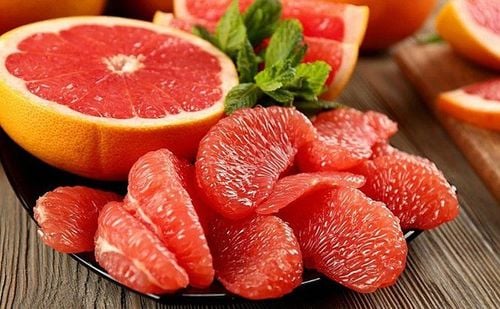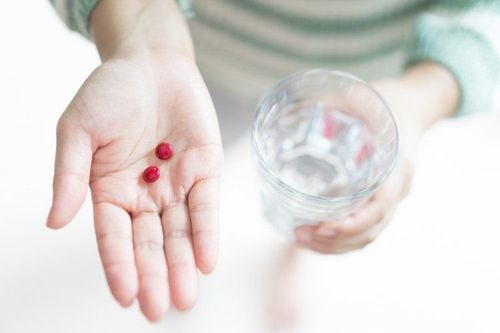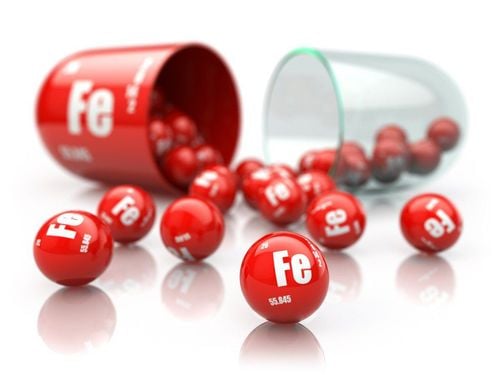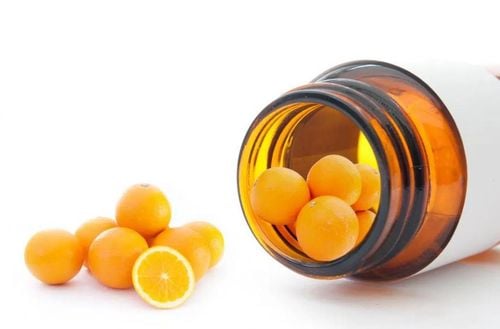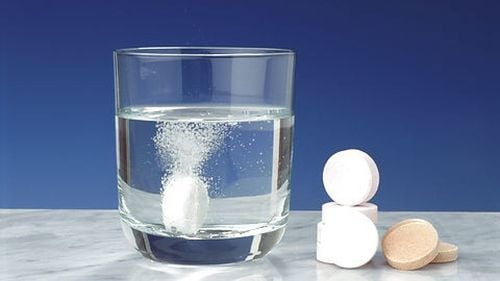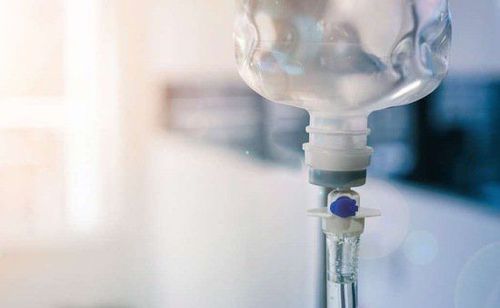This is an automatically translated article.
Iron deficiency anemia is a common type of anemia. This is a condition in which the blood lacks healthy red blood cells that can carry oxygen to the body's tissues. As the name suggests, iron deficiency anemia is caused by not having enough iron. Without enough iron, the body will not produce hemoglobin to carry oxygen.
1. How common is iron deficiency anemia?
Iron deficiency anemia is a common type of anemia, which is a condition in which the blood lacks healthy red blood cells that can carry oxygen to the body's tissues. Iron deficiency anemia is caused by not having enough iron. Without enough iron, your body can't produce enough of a substance in red blood cells that helps them transport oxygen, hemoglobin. So iron deficiency anemia can make you tired and short of breath.
Statistics show that up to 20% of all women and 50% of women are pregnant, while only 3% of men do not have enough iron in their bodies.
2. Signs to help identify iron deficiency anemia
Iron-deficiency anemia can be so mild at first that you may not even realize you have it. But as your body becomes increasingly iron deficient and the anemia worsens, the signs and symptoms increase.Signs and symptoms of iron deficiency anemia may include:
Weakness. Pale skin. Chest pain, fast heartbeat, or trouble breathing. Headache, dizziness or lightheadedness. Cold hands and feet. Inflammation or pain in the tongue. Nails break easily. Unusual cravings for non-nutritive substances, such as ice. Poor feeding, especially infants and children.

Các triệu chứng sẽ ngày càng rõ rệt hơn khi tình trạng thiếu máu thiếu sắt trở nên trầm trọng.
3. Iron deficiency anemia in women
Pregnancy, heavy menstrual bleeding and uterine fibroids are all reasons why women are more susceptible to iron deficiency anemia.
Heavy menstrual bleeding occurs when a woman bleeds more or for longer than usual. Normally, the number of days of menstruation lasts from 4 to 5 days and the amount of blood loss is from 50 to 80ml. Heavy menstrual bleeding is when a woman bleeds for more than seven days and loses twice as much blood as usual.
An estimated 20% of women of childbearing age suffer from iron deficiency anemia. Pregnant women are more likely to develop iron-deficiency anemia because they need a larger amount of blood to support the developing fetus.
A pelvic ultrasound can help your doctor find the cause of a woman's heavy bleeding, such as uterine fibroids. Fibroids often cause no symptoms, they occur when muscle tumors grow in the uterus. Although they are not usually cancerous, they can cause heavy menstrual bleeding leading to iron-deficiency anemia.
4. Iron deficiency anemia when to see a doctor?
If you or your child develops signs and symptoms of iron deficiency anemia, see your doctor. Iron deficiency anemia is not something that can be diagnosed or treated on its own. So, see your doctor for an accurate diagnosis, rather than self-administering iron supplements at home. Putting too much iron into your body can be dangerous because excess iron buildup can damage your liver and cause other complications.
5. What is the cause of iron deficiency anemia?
If you do not absorb enough iron or if you lose too much iron, your body cannot produce enough hemoglobin, then iron deficiency anemia develops.
Causes of iron deficiency anemia include:
Blood loss: Iron is present in red blood cells, when these cells die, they will release iron, and part of it will be reabsorbed by the body. So if you lose blood, you lose some iron. Women with heavy menstrual bleeding lose blood during menstruation, so they are at risk of iron deficiency anemia. Slow, chronic blood loss in the body such as from peptic ulcers, herniated discs, colon polyps, or colorectal cancer can cause iron deficiency anemia. Regular use of certain over-the-counter pain relievers, especially aspirin, can cause gastrointestinal bleeding. Lack of iron in your diet: Your body regularly gets iron from the foods you eat. If you absorb too little iron, over time you can develop an iron deficiency. Iron-rich foods such as meat, eggs, green leafy vegetables and iron-fortified foods. For normal growth and development, babies and children also need iron from their diet. Inability to absorb iron: Iron found in food is absorbed into your bloodstream through your small intestine. Digestive disorders such as celiac disease, which affects the gut's ability to absorb nutrients from digested food, can lead to iron-deficiency anemia. If part of your small intestine is surgically removed or completely removed it can affect your ability to absorb iron and other nutrients. Pregnancy: Without iron supplements, iron-deficiency anemia occurs in many pregnant women because they need more blood to supply themselves and the developing fetus. Along with the above causes, there are also risk factors for iron deficiency anemia, including:
Gender: Because women lose blood during menstruation, women in general are at risk for anemia. due to higher iron deficiency. Infants and children: Newborns, especially those born with low birth weight or prematurely, are at risk for iron-deficiency anemia because they don't get enough iron from breast milk or formula. Children need more iron during growth spurts. If your child is not eating a healthy and varied diet, he or she may be at risk for iron deficiency. Vegetarians: Non-vegetarians have a higher risk of iron-deficiency anemia if they don't eat other iron-rich foods. Regular blood donors: Regular blood donors may be at increased risk of iron deficiency anemia because donating blood can deplete iron stores. This is a temporary problem, which can be remedied by eating more iron-rich foods. If you have been told you cannot donate blood because of low hemoglobin, ask your doctor what you can do to improve the condition.
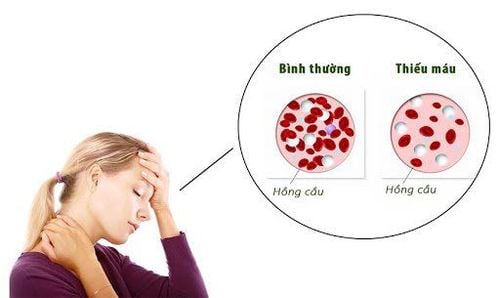
Thiếu máu thiếu sắt có thể bị gây ra bởi nhiều nguyên nhân khác nhau như mất máu, thiếu sắt, mang thai,...
6. What complications can iron deficiency anemia cause?
Mild iron deficiency anemia usually does not cause complications. However, if left untreated, the condition can become serious and lead to health problems, including:
Heart problems: Iron-deficiency anemia can lead to tachycardia or uneven. Your heart has to pump more blood to make up for the lack of oxygen in your blood when you are anemic. This can lead to heart failure. Pregnancy problems: Severe iron-deficiency anemia in pregnant women has been linked to premature birth and low birth weight babies. These conditions can be prevented by taking iron supplements as part of prenatal care. Growth problems: In infants and young children, severe iron deficiency can lead to anemia and slow growth and development. In addition, iron-deficiency anemia is associated with an increased risk of infection in children.
7. How is iron deficiency anemia diagnosed?
Your doctor can diagnose iron deficiency anemia with a blood test. Consists of:
7.1. Complete blood count (CBC) test
A complete blood count (CBC) is the first test your doctor will use. This test measures the amount of all components in the blood, including:
Red blood cells (RBCs). White blood cells (WBCs). Hemoglobin - hemoglobin. Hematocrit. Platelet. This test provides information about your blood, which is helpful in diagnosing iron-deficiency anemia. This information includes:
Hematocrit level, which is the percentage of blood volume made up of red blood cells. hemoglobin level. The size of your RBCs. The range of a normal hematocrit is 34.9 to 44.5% for adult women and 38.8 to 50% for adult men. The normal hemoglobin range is 12.0 to 15.5 g/dL for an adult woman and 13.5 to 17.5 g/dL for an adult man.
People with iron deficiency anemia will have low hematocrit and hemoglobin levels, and red blood cells are smaller than normal.
A complete blood count check is usually done as part of a routine physical exam. It is a good indicator of a person's overall health. This test is useful for diagnosing this type of iron deficiency anemia.
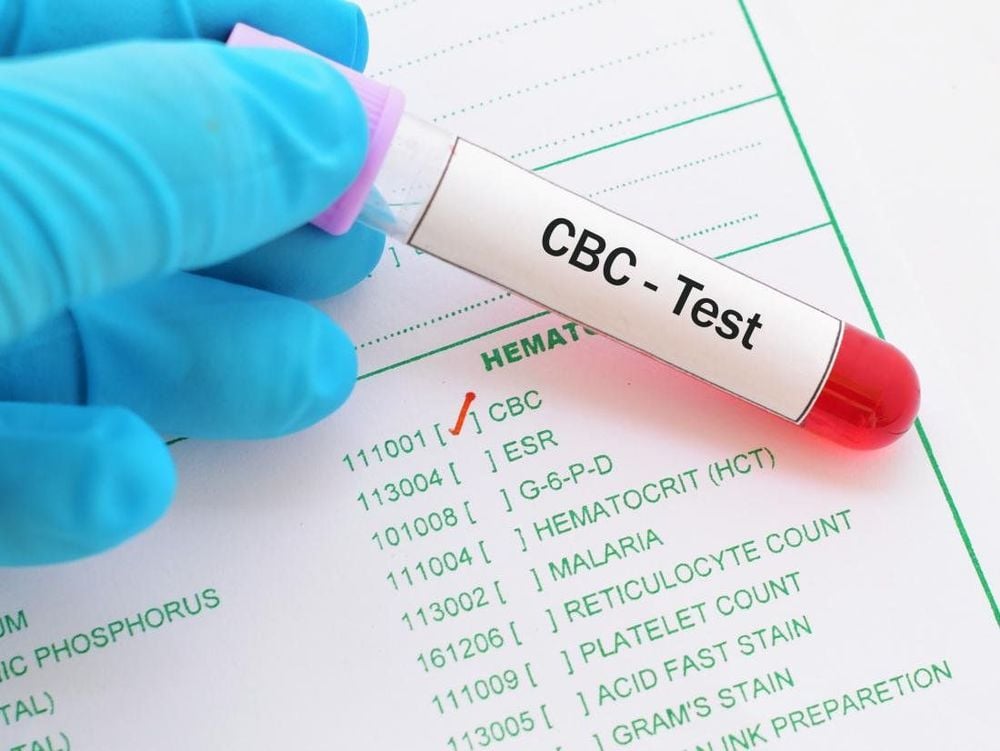
Xét nghiệm tổng phân tích tế bào máu (CBC) là xét nghiệm đầu tiên bác sĩ dùng để chẩn đoán thiếu sắt thiếu máu.
7.2. Other tests
Anemia can usually be identified with a complete blood count test. Your doctor may order other blood tests to determine the severity of your anemia and help determine treatment. Your doctor may also examine your blood under a microscope. These blood tests will provide information, including:
Your blood iron level. The size and color of your red blood cells (Redocytes are pale if they lack iron). Your ferritin levels: Ferritin is a protein that helps store iron in your body. Low ferritin levels indicate low iron stores. Your total iron-binding capacity (TIBC): The TIBC test is used to determine the amount of iron-carrying transferrin. Transferrin is an iron transport protein. If your doctor is concerned that internal bleeding is causing your anemia, you may need further tests. One test you can do is a stool blood test. Blood in your stool could be a sign of bleeding in your intestines.
Your doctor may also perform an endoscopy, in which they use a small camera on a flexible tube to view the lining of your digestive tract.
Gastroduodenal endoscopy allows the doctor to examine the lining of the esophagus, stomach, and upper part of the small intestine. A colonoscopy allows the doctor to examine the lining of the colon, which is the lower part of the digestive tract. These tests can help locate gastrointestinal bleeding.
8. Can iron deficiency anemia be prevented?
You can reduce your risk of iron-deficiency anemia by including iron-rich foods in your meals.
Foods rich in iron include:
Red meat, pork and poultry. Seafood. Bean. Dark green leafy vegetables. Dried fruits like raisins and apricots. Iron-fortified cereals, breads and pastas. Peas. Your body absorbs more iron from meat than from other sources. If you are a vegetarian, you need to increase your intake of iron-rich plant-based foods.
At the same time, you also need to choose foods containing vitamin C to enhance iron absorption by drinking citrus juices or eating other vitamin C-rich foods along with iron-rich foods. Vitamin C in citrus fruits will help your body absorb iron better.
Vitamin C is also found in:
Broccoli. Pomelo. Kiwi. Leafy green vegetables. Melon. Oranges. Chili. Strawberry. Tangerine. Tomato. To prevent iron-deficiency anemia in infants, give your baby breast milk or iron-fortified formula for the first year. You should note that cow's milk is not a good source of iron for infants and is not recommended for children under 1 year of age.
After 6 months of age, you should start giving your baby iron-fortified cereal or pureed meat at least twice a day to increase iron intake. After 1 year of age, make sure your baby drinks no more than 600ml of milk per day. Children drinking too much milk will often reduce the use of other foods, including iron-rich foods.
Please follow the website: Vinmec.com regularly to update many other useful information.
References: webmd.com, healthline.com, mayoclinic.org
Please dial HOTLINE for more information or register for an appointment HERE. Download MyVinmec app to make appointments faster and to manage your bookings easily.




